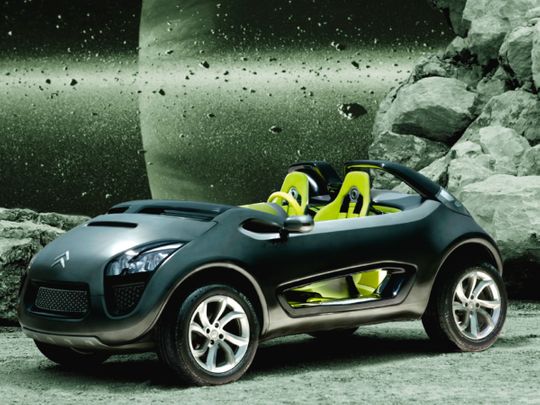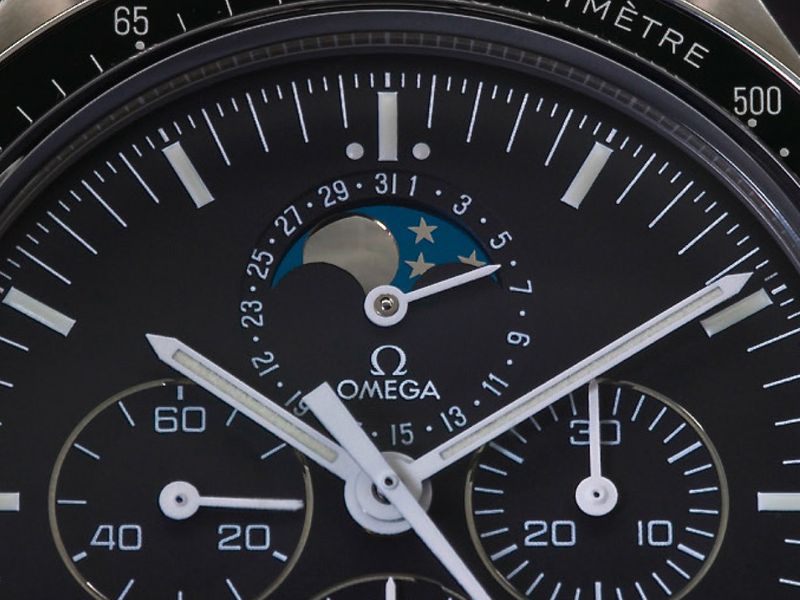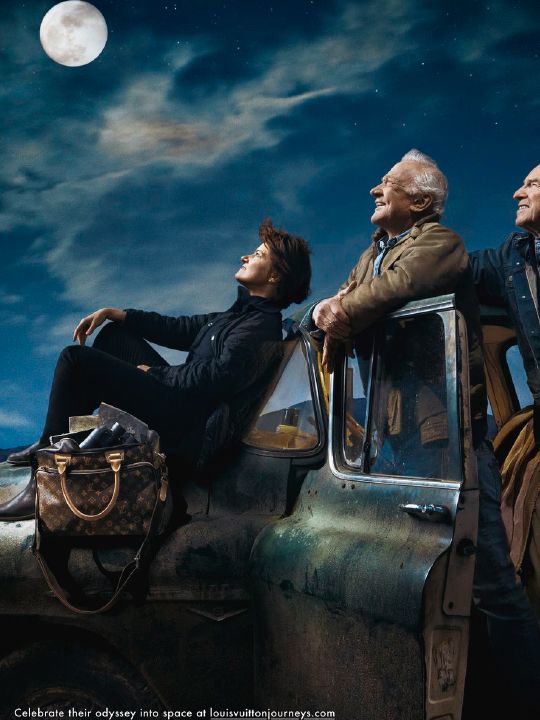
So near but yet so far! The terrestrial satellite has always enjoyed a dual and often basic image in advertising. Sometimes round and dreamlike, used to symbolize poetry and touch women’s emotions. Sometimes difficult to reach and full of dangers, evoking adventure and seducing men. Either way, it fascinates. Synonymous with a distant and mysterious world, this planet is the ideal setting to highlight the qualities of manufactured objects. And advertisers of all kinds have not held back. They seize the astral body to make consumers dream, even if in some cases, the link with their products appears to be dubious. The rare accessories that have actually made the trip to the moon, then take on clear legitimacy.
Watches in orbit
From this point of view, the large lunar advertising campaigns of Omega watches appear perfectly appropriate. Just like Hergé’s Tintin character, the Speedmaster chronograph has actually been on the closest celestial body to the earth. NASA chose this sporting timepiece as early as 1965 as the official watch of its Apollo space exploration programme. More generally, the rest of the horological industry also makes extensive references to the moon. In particular, there is a complication directly related to this celestial body. It is part of the Moon Phases model of watch whose mechanism reproduces the cycle of the terrestrial satellite on their dial. These highly popular models were primarily intended for women. Fragile and elegant, they did not, of course, ever put the slightest cog on the moon.
We drove on the moon
Several cars have crushed the lunar crust. The famous Lunar Roving Vehicle (LRV) accompanied the expeditions: Apollo 15, 16 and 17, between 1971 and 72. Boeing and Delco were behind their design. At the time, the characteristics of the lunar soil were not precisely known. The specifications nevertheless stipulated that “the machine must be able to operate in a particularly hostile environment” (high temperature, lack of atmosphere, low gravity, uneven and loose ground). It measured 3 metres long and ran on an electric motor. And most importantly at less than 200 kg it was very light. An essential feature, because even if the LRV was abandoned each time, it still had to be sent up there. In the absence of a pressurized body, the driver is in a spacesuit. Its storage boxes made it possible to recover rock samples and communication with the shuttle and the ground was possible with its on-board telecommunications systems. On the moon, the vehicle proved effective and fulfilled its assigned missions.

Stellar concept cars
If the LRV is the only vehicle to have really cruised upon the lunar soil, others have touched there virtually. The car industry adores astral atmospheres, especially when presenting its most amazing concept cars. These futuristic vehicles are intended to make the car salon audience dream. It is most often the SUV of the future or a postmodern buggy, with an adventurous spirit. Many have been photographed between craters, dark rocks and fields of pebbles and are to be found within these desolate decorations. To achieve these photo shoots, two solutions: 1) Find terrestrial land capable of evoking the natural landscape of the Moon. Iceland with its arid mountains and rocky expanses often wins this role. Deserts of sand or stones, like the Sahara, are also perfectly suitable. 2) Design a synthesis photo or film where the avant-garde prototype jaunts around a mineral cosmic universe. This digital technique permits the realisation of this marvel. No need to look for natural scenery, and no need to develop an actual rolling vehicle. Virtual wins.

The laundry list
A handful of other objects have actually landed on the moon. Proof with this laundry list. Cameras, recorders, cookies and fruit juices, electronic tools and pens. This merry junk is adorned with the ‘lunar label’. Westinghouse or Hasselblad products have filmed and photographed this sidereal epic. IBM and the Harris Group, electronics companies, have facilitated rocket launches.
Rocket pens, Tang juices (that retro-futuristic orange powder) and Sony recorders were also used in the rock-et. Advertisers boast their glorious membership through numerous commercials. Many other products or services have surfed on the lunar conquest. Ford automobiles, many airlines, TWA or Eastern Airways or even Union Carbide chemicals… But not legitimately. Marketing professionals took possession of the astronauts. Transforming them into sandwich-board men. They become the stooges of various products. Buzz Aldrin celebrates the merits of the Volkswagen Beetle, Gordon Cooper Atari Computers, Pete Conrad Revo Sunglasses…

Corporations on the moon?
Louis Vuitton achieved an advertising coup by bringing together, many years after their exploits, three astral veterans in the same advert. We discover Buzz Aldrin, James Lovell and Sally Ride, the first American woman in space, accompanied by one of the famous bags from the luxury brand, gazing at the moon with fascination… from solid ground. Opportunism?
Not really, the malletier is not trying to imply his bag went to the moon. There is no deception. It’s just the appeal of the Moon that is being seized upon. The Moon belongs to everyone, it is not forbidden to seize it. NASA announced last December that it “wanted to return to the moon”. The US Agency intends to rely on large multinational companies. This time it will pay the providers SpaceX or Boeing to send its astronauts for a walk up above. Nine high-tech and electronics companies have been shortlisted.
Facing a China that now dominates the global economy, the Trump administration intends to demonstrate that the US is still in the race. This announcement followed China’s declaration disclosing their intention to lay a boot on the moon around 2025. This renewed interest for the celestial body could also arise from the as yet unexploited natural resources it conceals.


